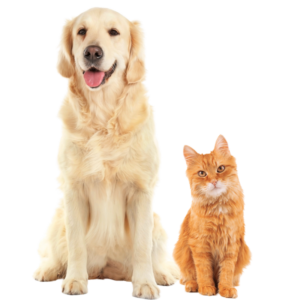Key points
- Signs of osteoarthritis may be subtle and easy to miss
- Early treatment is critical to slow progression of the disease
- Maintaining lean body weight is absolutely critical for arthritic patients
- Newer concepts of arthritis management involve proper exercise to maintain muscle mass and decrease pain
- Structure-modifying agents are most effective when started early and maintained long-term
- Nonsteroidal anti-inflammatory and analgesic drugs, acupuncture, and physical therapy may be recommended for later stages of the disease
Exactly what is Osteoarthritis?
Osteoarthritis is a chronic degenerative disease that may affect any joint but is commonly found in a pet’s hip, elbow, shoulder, stifle (knee) , carpus (wrist), hock (ankle) or intervertebral joints (in the spine). It occurs when cartilage in the joint is damaged, either following a traumatic event or with wear and tear that increases in athletic animals, obese animals, or when the joint is congenitally abnormal.
Cartilage decreases joint stress by reducing impact on the ends of the bones in joints, like a gelatinous shock absorber. When cartilage is damaged, a cascade of inflammatory changes occurs, eventually leading to destruction of the cartilage and subsequent damage to the underlying bone. Cartilage contains no nerves – if your pet is showing any signs of pain, the damage and changes in underlying bone have already begun.
Signs of arthritis include:
- Reluctance to take walks of usual length
- Stiffness (that may disappear once the pet has ‘warmed up’)
- Difficulty climbing stairs, climbing in the car, on the bed or a sofa
- Difficulty rising from rest
- Limping
- Abnormal gait
- Licking of a single joint
- Acting withdrawn, spending less time playing with family (which is often misunderstood as a sign of ‘aging’)
- Soreness when touched
- Rarely, aggression when touched or approached
- Most pets don’t cry or whimper unless pain is very severe (like a broken limb)
Exactly what can I do?
Weight Reduction: a healthy weight is very important in managing arthritis
Controlled Exercise: Low-impact exercise is best; swimming or walking through shallow water is ideal. Leash walking and controlled jogging are also acceptable.
Nutraceuticals: Glucosamine HCl and Chondroitin along with omega fatty acids contain compounds that support cartilage structure, prevent further deterioration, suppress inflammation, and reduce free radical damage.
Injectable Chondroprotective Agent: Talk to your veterinarian about an injectable agent that may also help preserve cartilage in the joints.
Prescription Drugs: Drugs are available that can reduce inflammation and suppress pain in dogs with more advanced disease. Side effects can be minimized by monitoring your dog’s blood work regularly.
Food: There are new foods that can be used to given that actually help reduce pain and inflammation of arthritis. This is an easy and natural way to treat arthritis pain in our pets.
Environmental Modifications: Often simple steps can be taken around the house to make your pet more comfortable. Adding non slip flooring or throw rugs at the bottom of steps, adding a ramp or blocks to help a pet get on the couch or upstairs, placing non slip bath mats on slippery stairs, providing soft comfortable bedding and raising feeding bowls off the floor for large dogs are all simple steps that you can take. Look around your house and see where your pet struggles or slips and then try to fix it for them.
Treating this disease is best approached from several directions. Your pet will need lifelong treatment. We are here to help you make your pet as comfortable as possible. They have given you a lifetime of love and deserve the best we can do for them. Please don’t hesitate to call us with any questions or concerns.
Written by Anne Huard, Hospital Manager



